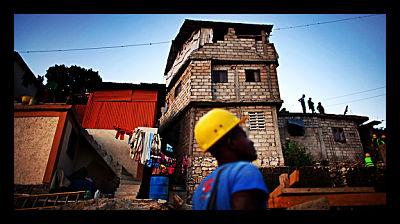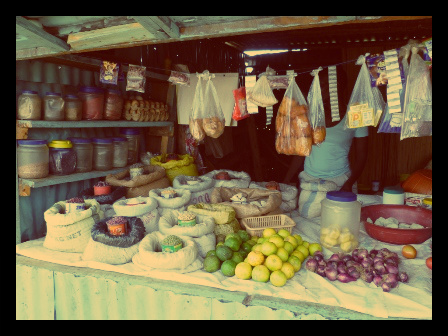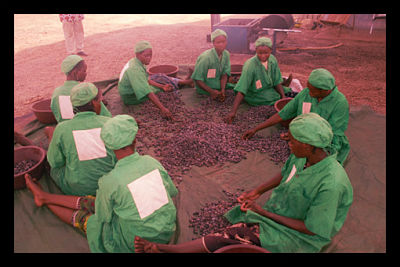 A controversy with foreign aid does not always relate to misuse but the reality of the numbers and figures after the aid is delivered. A popular example of this has been the $9 billion in donations made to the Haitian government since the 2010 earthquake.
A controversy with foreign aid does not always relate to misuse but the reality of the numbers and figures after the aid is delivered. A popular example of this has been the $9 billion in donations made to the Haitian government since the 2010 earthquake.
Last week, National Public Radio (npr) interviewed Jonathan Katz, the author of The Big Truck That Went By: How the World Came to Save Haiti and Left Behind a Disaster. This new book focuses on the damages to both the Haitian government and its people due to communication issues, lack of coordination, and the general failure of donor countries to follow-through on their promises.
After reading the interview, it is important to keep in mind that foreign aid is not a waste. There have been thousands and thousands of completely successful large-scale and small-scale transactions and projects throughout the centuries. Governments, however, need to really sit down and review their policies. In this review, one would hope they would seriously consider making more use of direct aid. As Katz briefly touches on in his interview, there is the uncommon but possible option of paying victims of the earthquake (or any crisis) and removing the middleman. Perhaps not handing them a band of cash exactly, but focusing the energy and time spent on drafting contracts, debt relief plans, and the such to send volunteers and individuals who are willing and passionate about making small but immediate and tangible changes, such as Syrian-American Omar Chamma has been doing in Syria.
The transcript of the interview follows:
Aid pledged to Haiti — $9.3 billion worth from 2010 to 2012 — is about a third of all global health aid donated in 2012. What happened to the money that was supposed to go to Haiti?
Katz: Money did what money tends to do in most foreign aid situations. That is, rather than being a model in which a rich country gives a poor country a big bag of cash and says, “Here spend this on fixing things up from whatever the latest crisis was,” what actually happens is that very little of the money actually leaves the donor countries. First of all, you’ve got billions of dollars that are promised but just never delivered. You’ve got billions of dollars more that were sort of creative accounting. Donor nations say they’re providing debt relief, yet those debts were never realistically going to be paid back. So some of the money is sort of fictive.
So how much actually made it into Haiti?
Even among the real money, if you look at what was labeled as humanitarian relief, in the months right after the quake, that amounts to about $2.5 billion.
Ninety-three percent of that money either went to United Nations agencies or international nongovernmental organizations, or it never left the donor government.
So you had the Pentagon writing bills to the State Department to get reimbursed for having sent troops down to respond to the disaster.
If we’re talking about reconstruction, it’s really a misnomer to think that relief aid was necessarily going to have the effect of rebuilding a country in any shape or form.
So what was that money spent on?
Band-Aids. Literally bandages. Short-term relief. Tarps to put over your head. Food to fill emergency gaps in supply.
But food gets eaten. Tarps wear out. Band-Aids get pulled off. And ultimately, all that money is spent, but people aren’t left with anything durable.When you hear about all these billions of dollars [in aid donations], the imagination is that they’re going to go and rebuild the country after the earthquake. They were never intended to do so and, lo and behold, they didn’t.
There are often complaints after big disasters about waste and inefficiencies. Was the Haiti earthquake different from any other international disaster or is this typical?
What is interesting about Haiti is the extremes.
There are lots of places that have weak governments, but Haiti’s government is weak in a special way. It’s the product of so many years of aid going around the government and international efforts to undermine the government. Presidents being overthrown and flown out on U.S. Air Force planes and then reinstalled and then overthrown again. That left the Haitian government in such a weakened state.
Then the disaster itself was also so much more extreme. It was so concentrated. It hit the capital city. Whether your estimates for a death toll is in the 80,000 range or closer to the government’s estimate of 316,000 — in a city of 2.5 million people — it’s just an extraordinary number.
It was an incredibly horrific disaster. It hit the country right at its heart and destroyed a government that was already weakened.
But beyond that, the attitude that so many foreign aid groups have regarding Haiti is that you can basically come in and do whatever you want. So there was no accountability, no coordination.
People were just running around doing what they thought was best or what they thought was best for them. And it really created a mess.
– Deena Dulgerian
Source: npr
 At the beginning of an international meeting of donors and philanthropists in Qatar to discuss the development of Sudan, the UK has committed an additional $102 million in aid to Sudan. Over half of this aid is for Darfur. Ravaged through the years by civil wars, Sudan and specifically Darfur is desolate and destroyed. However, the international community is rallying around the country to support a peace deal signed in 2011 and to work towards rebuilding infrastructure and communities in Sudan. Significant in the pledge was the goal to move the country away from a dependence on emergency aid and food handouts. The citizens of Sudan have endured much and aid that continues to foster dependence on international donors is going to do little for the growth of the country.
At the beginning of an international meeting of donors and philanthropists in Qatar to discuss the development of Sudan, the UK has committed an additional $102 million in aid to Sudan. Over half of this aid is for Darfur. Ravaged through the years by civil wars, Sudan and specifically Darfur is desolate and destroyed. However, the international community is rallying around the country to support a peace deal signed in 2011 and to work towards rebuilding infrastructure and communities in Sudan. Significant in the pledge was the goal to move the country away from a dependence on emergency aid and food handouts. The citizens of Sudan have endured much and aid that continues to foster dependence on international donors is going to do little for the growth of the country.

 The Paris Declaration on Aid Effectiveness (PDAE), drafted in 2005, was born out of decades of experience for what does and does not work when allocating and utilizing aid development money. The principles have gained support across the world and within
The Paris Declaration on Aid Effectiveness (PDAE), drafted in 2005, was born out of decades of experience for what does and does not work when allocating and utilizing aid development money. The principles have gained support across the world and within 


 Like it or not,
Like it or not,  A controversy with
A controversy with 